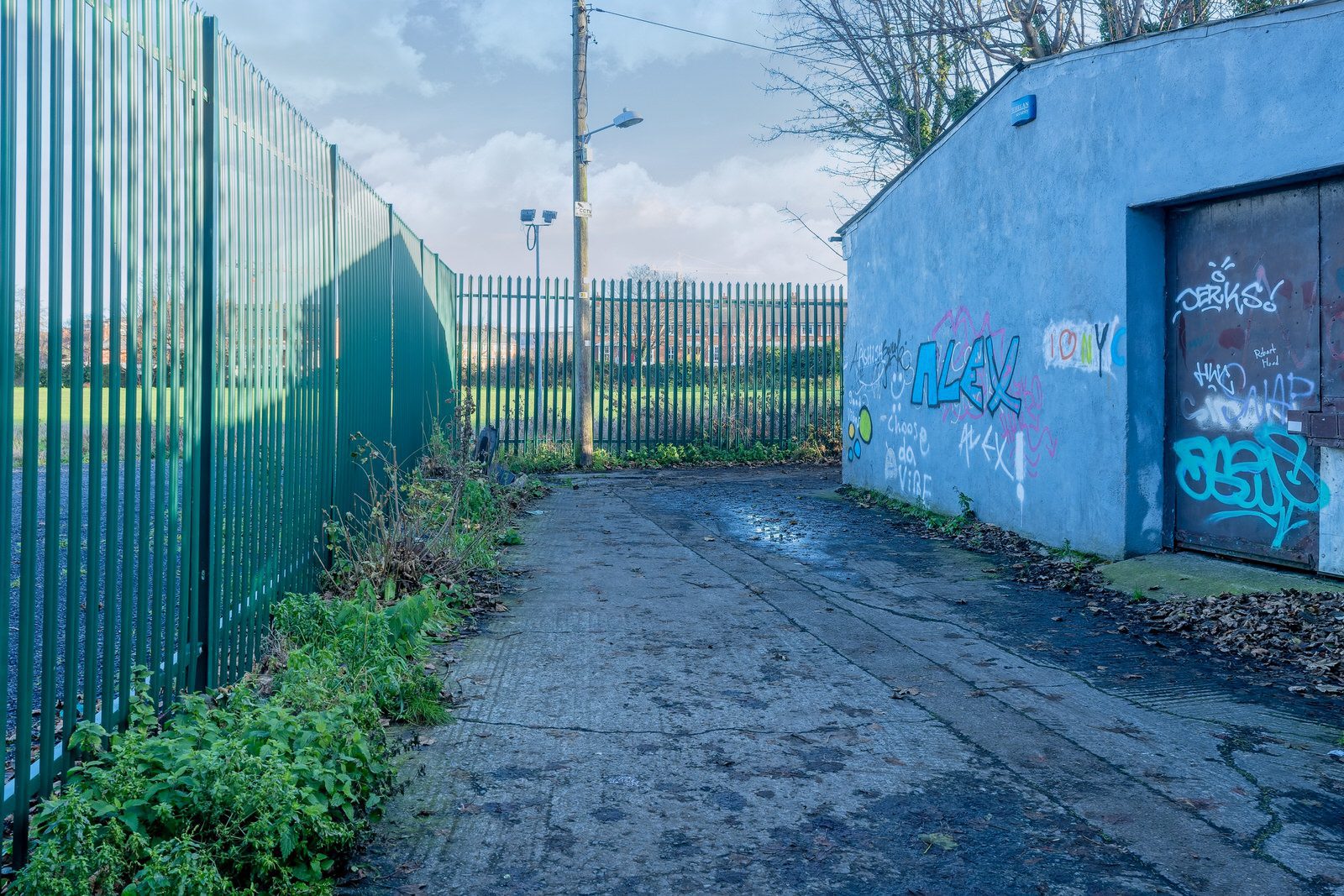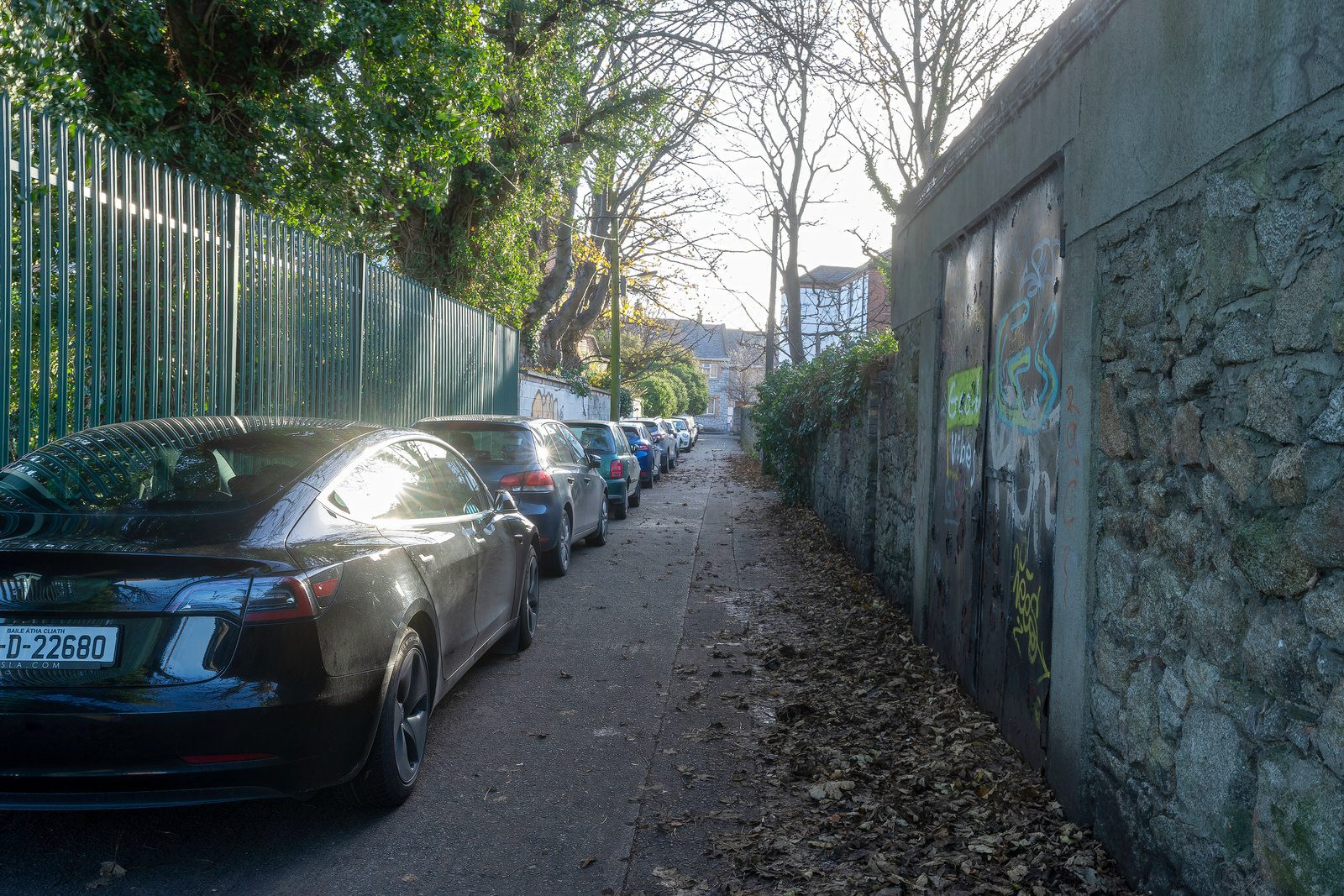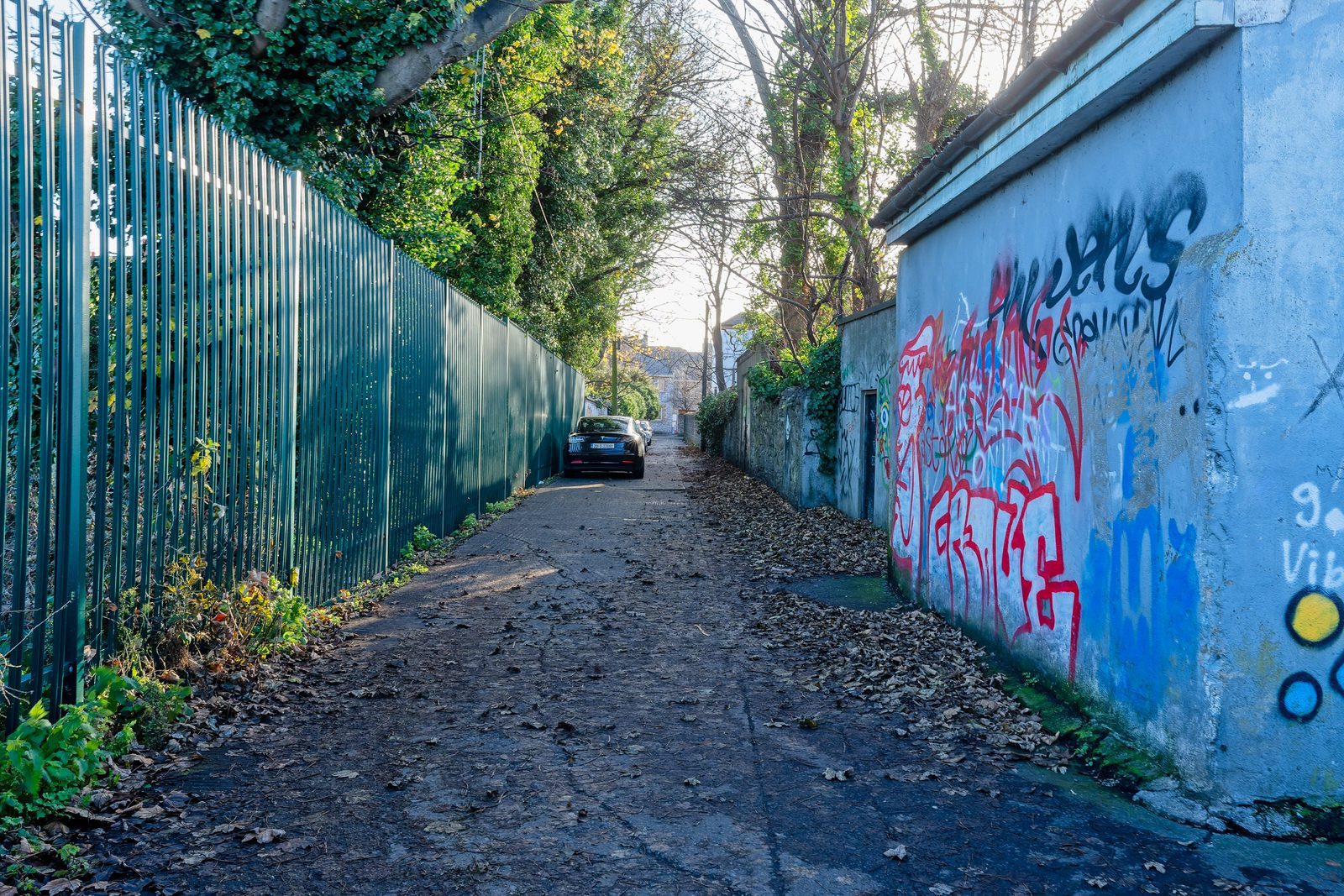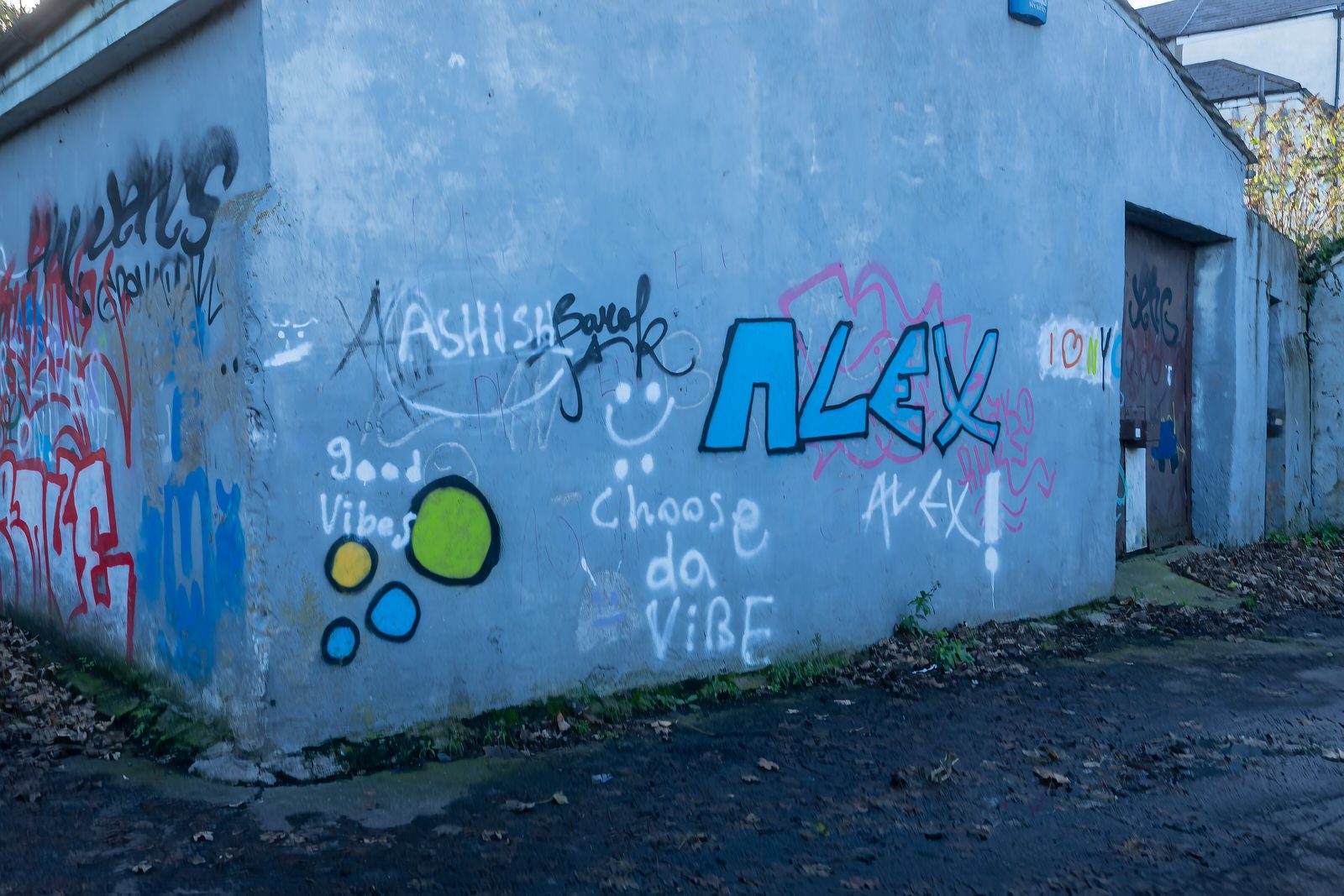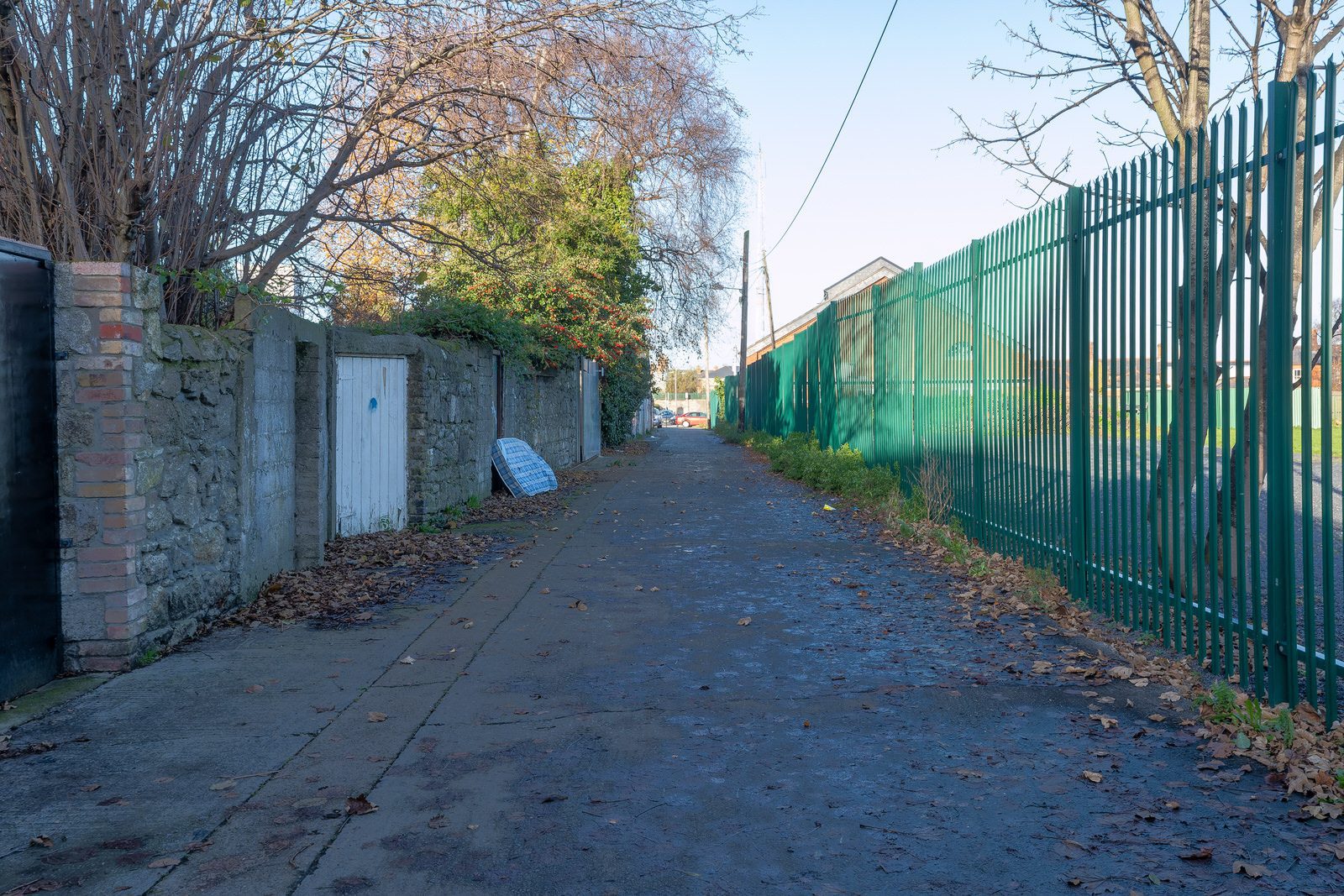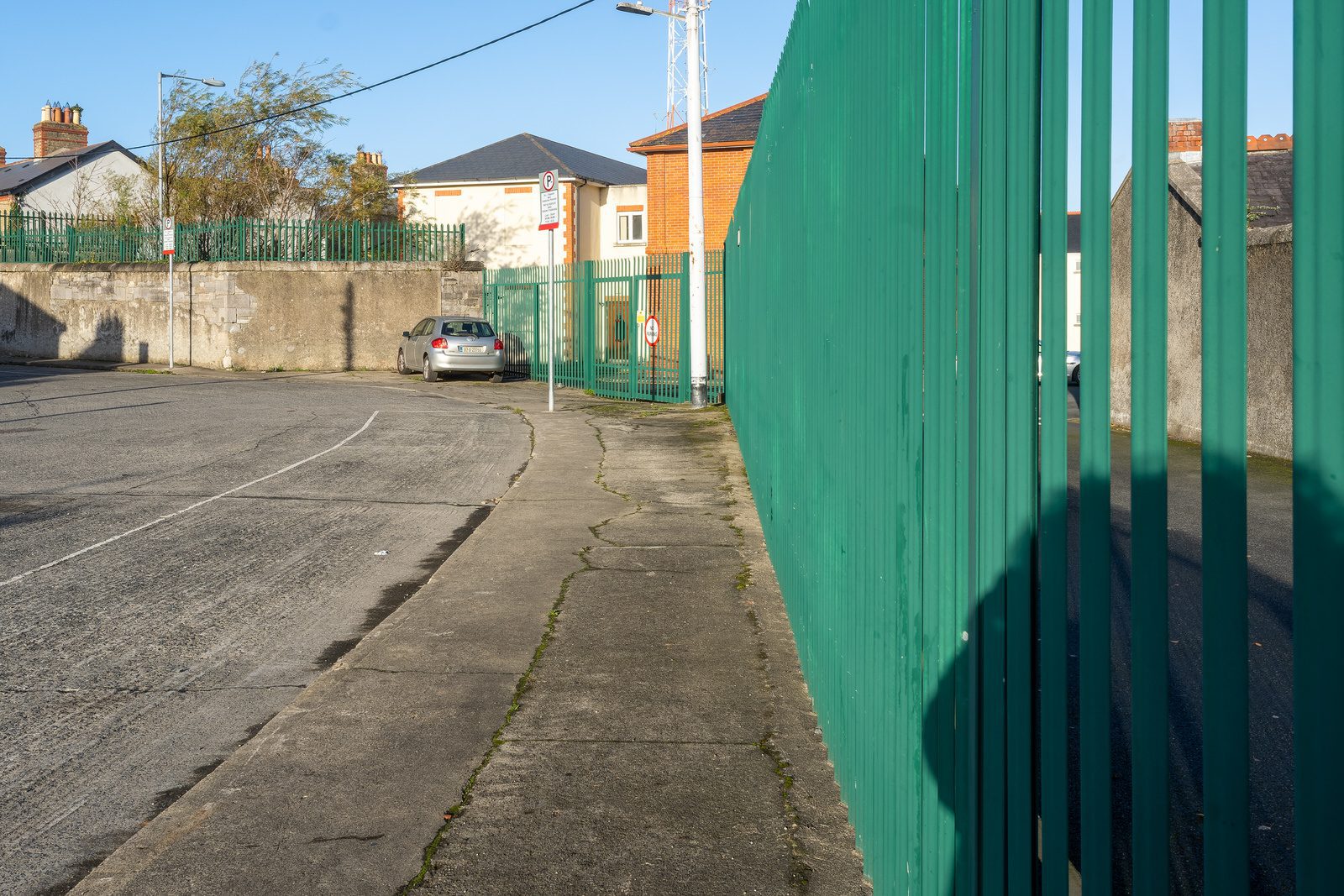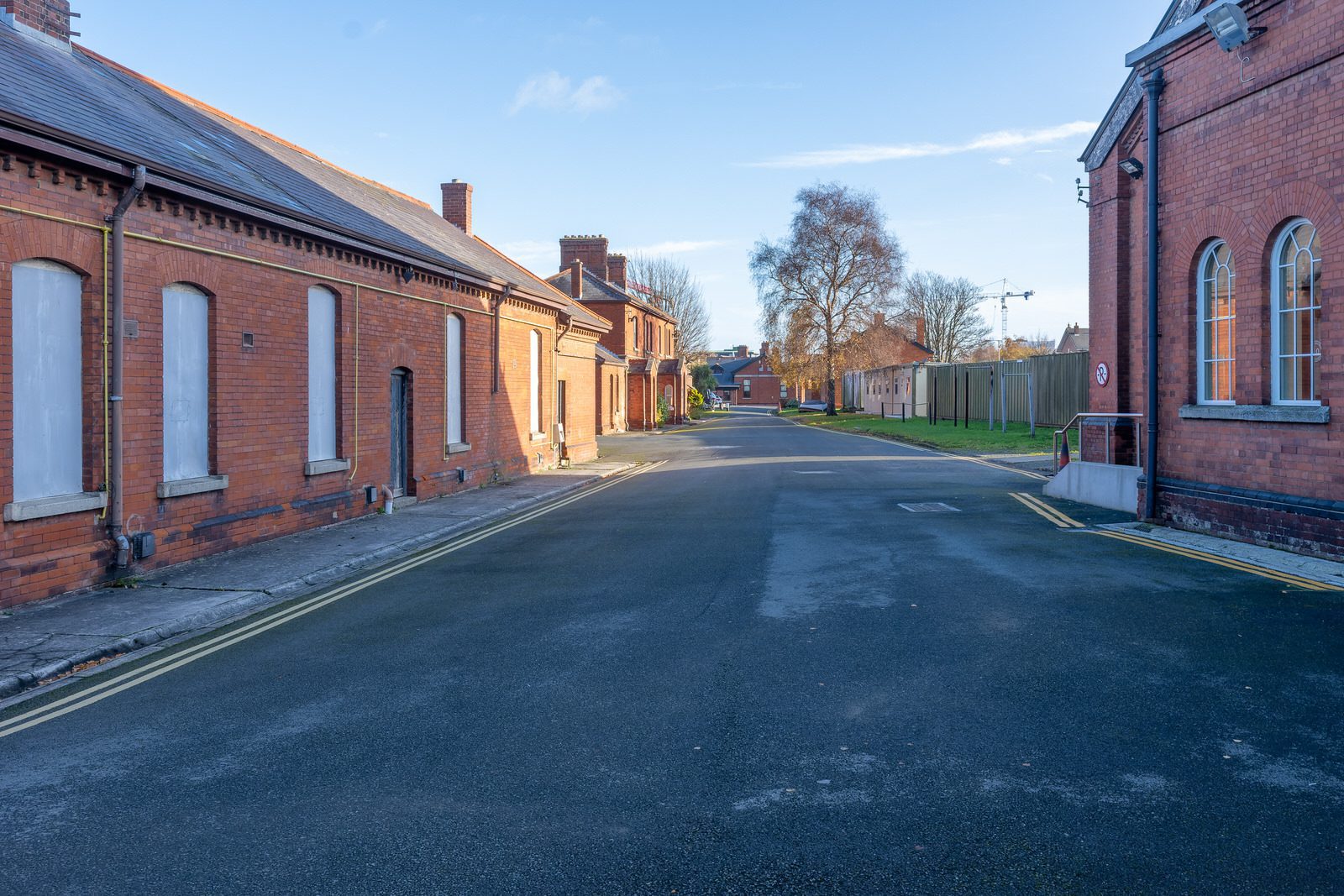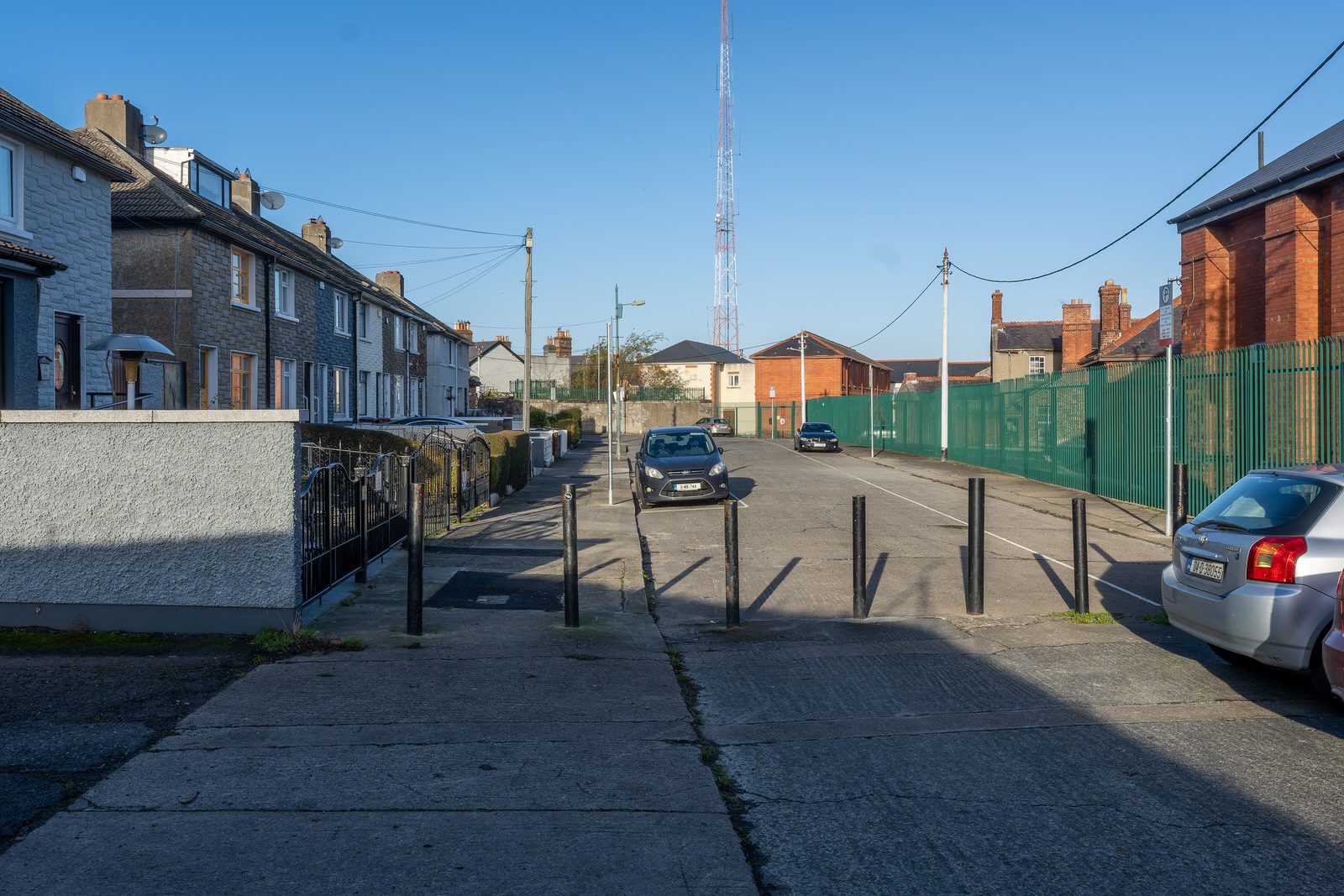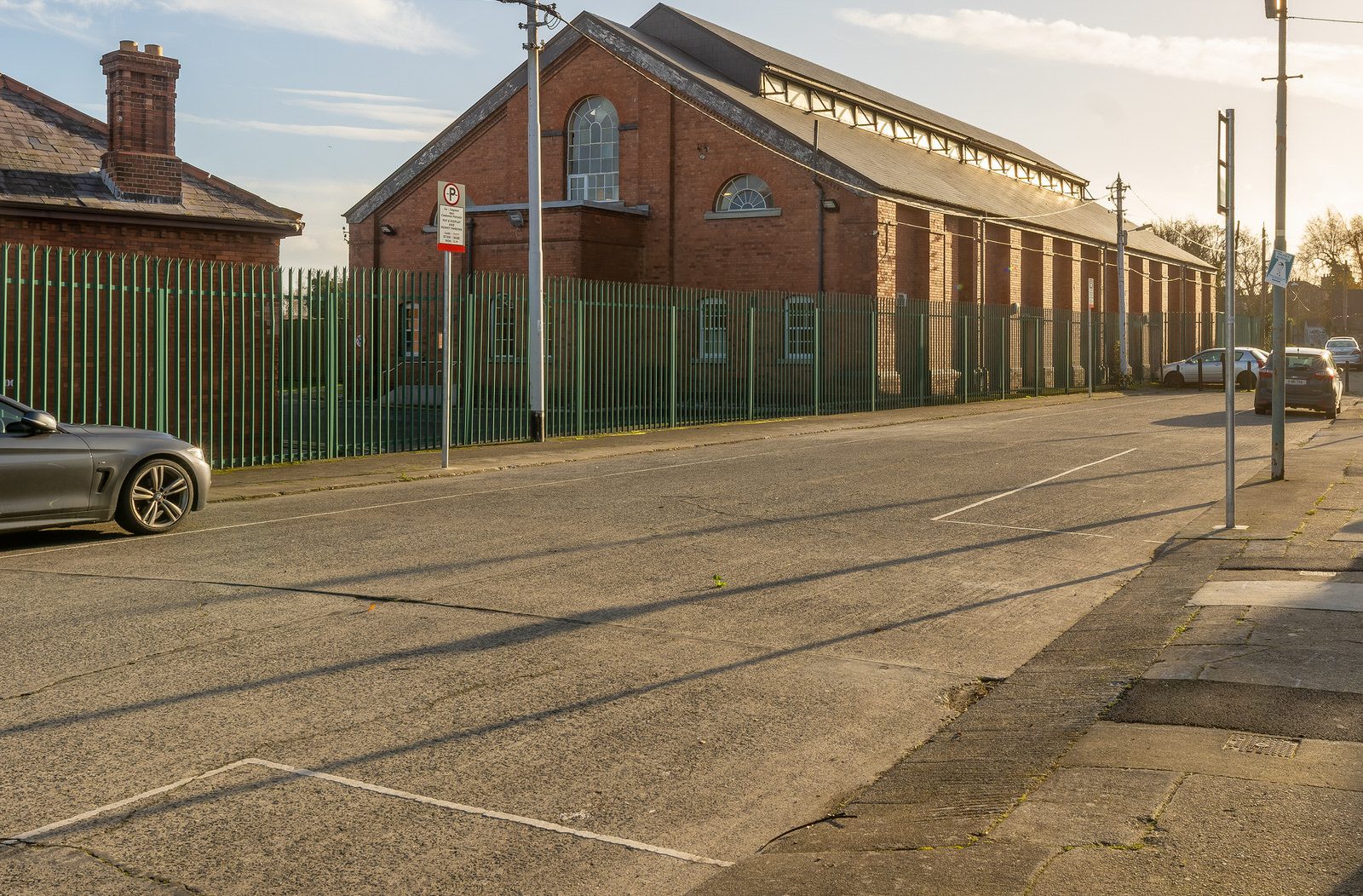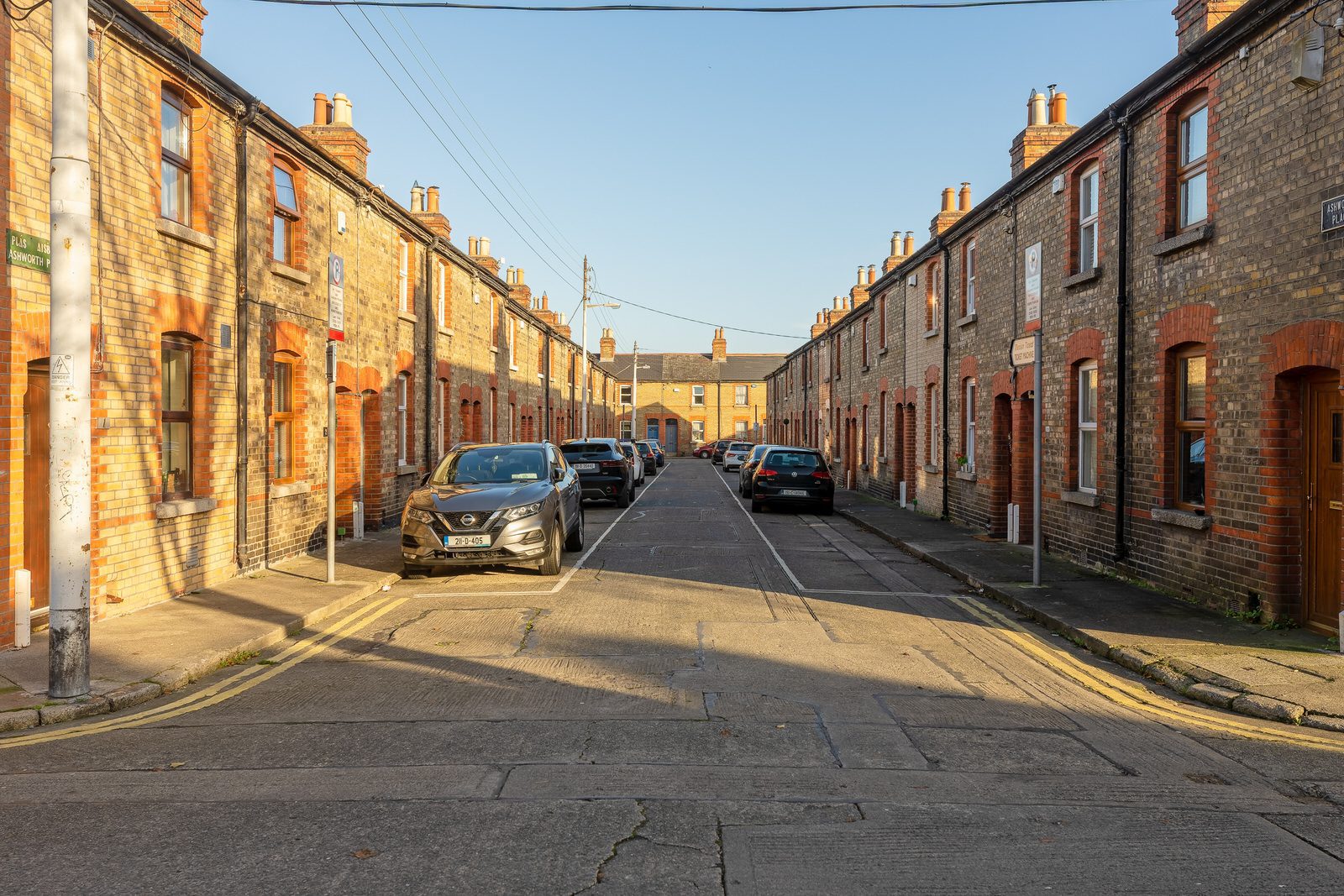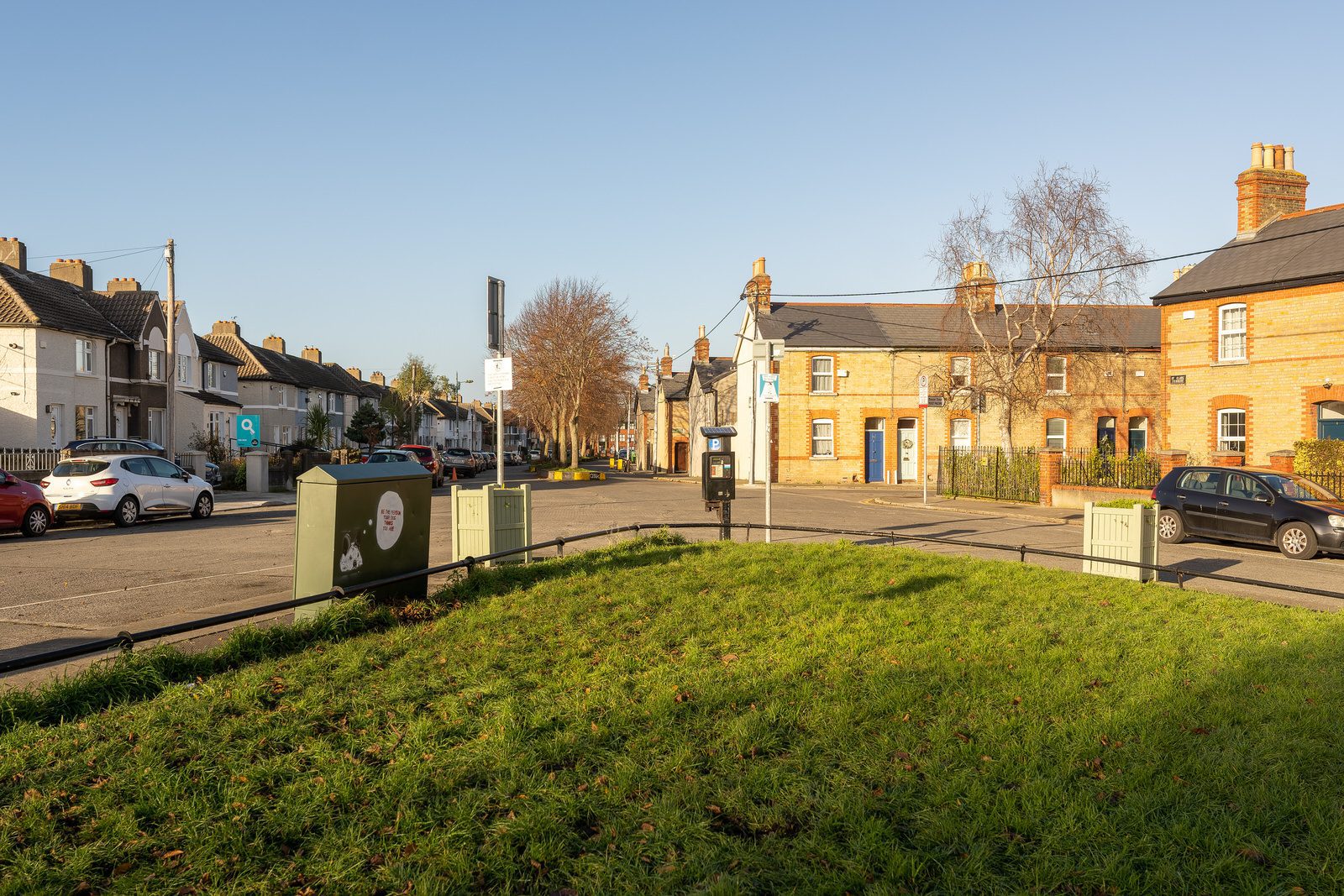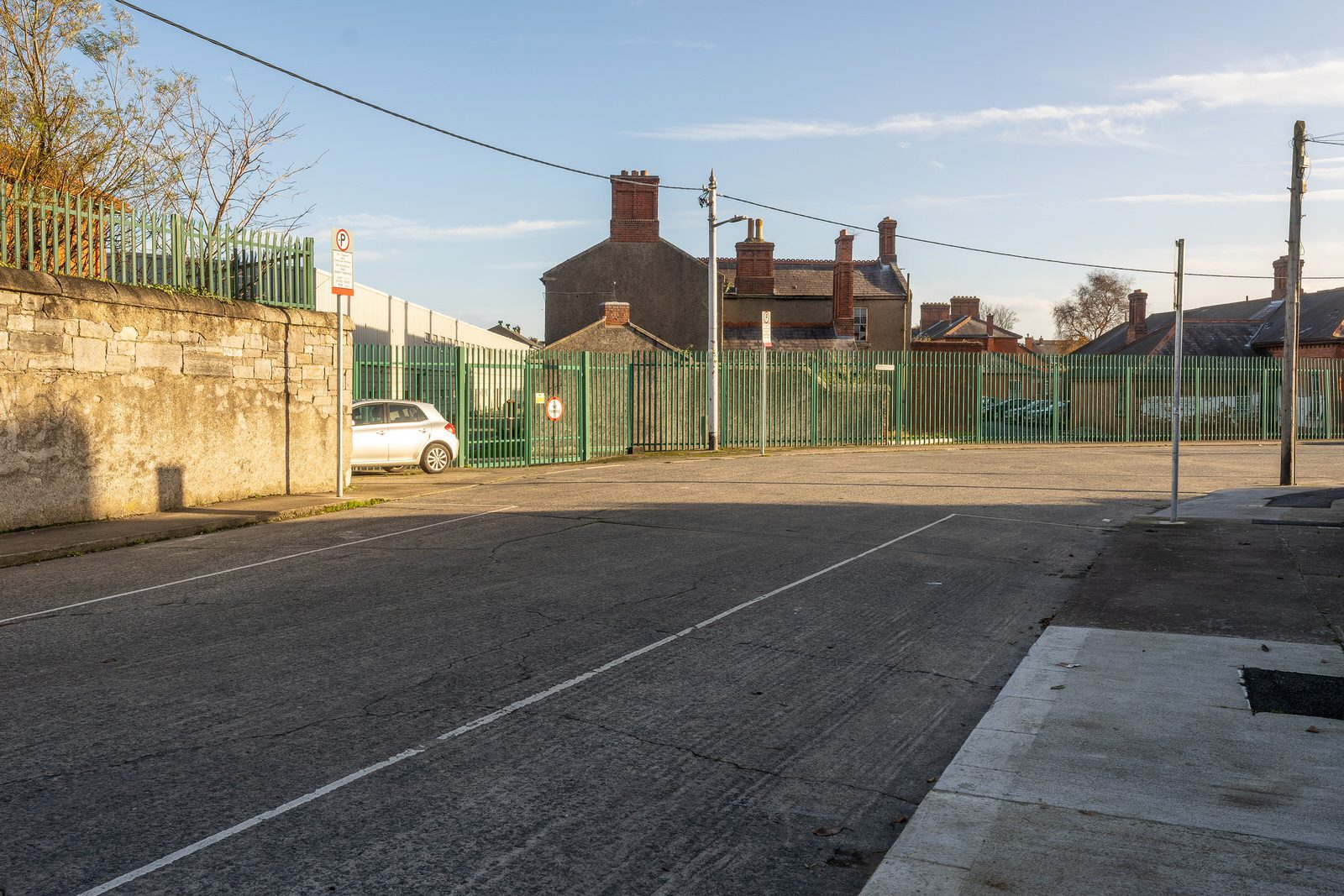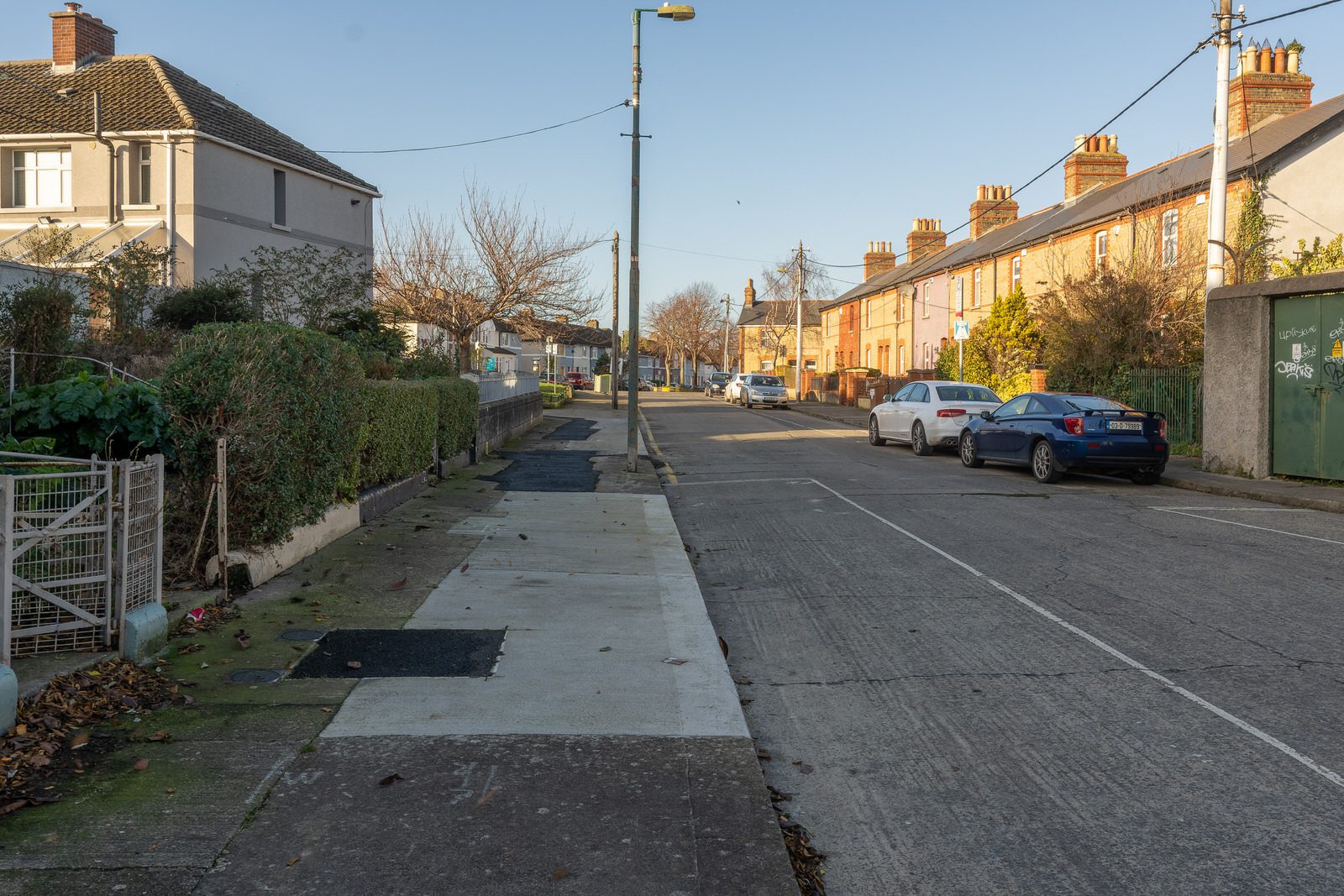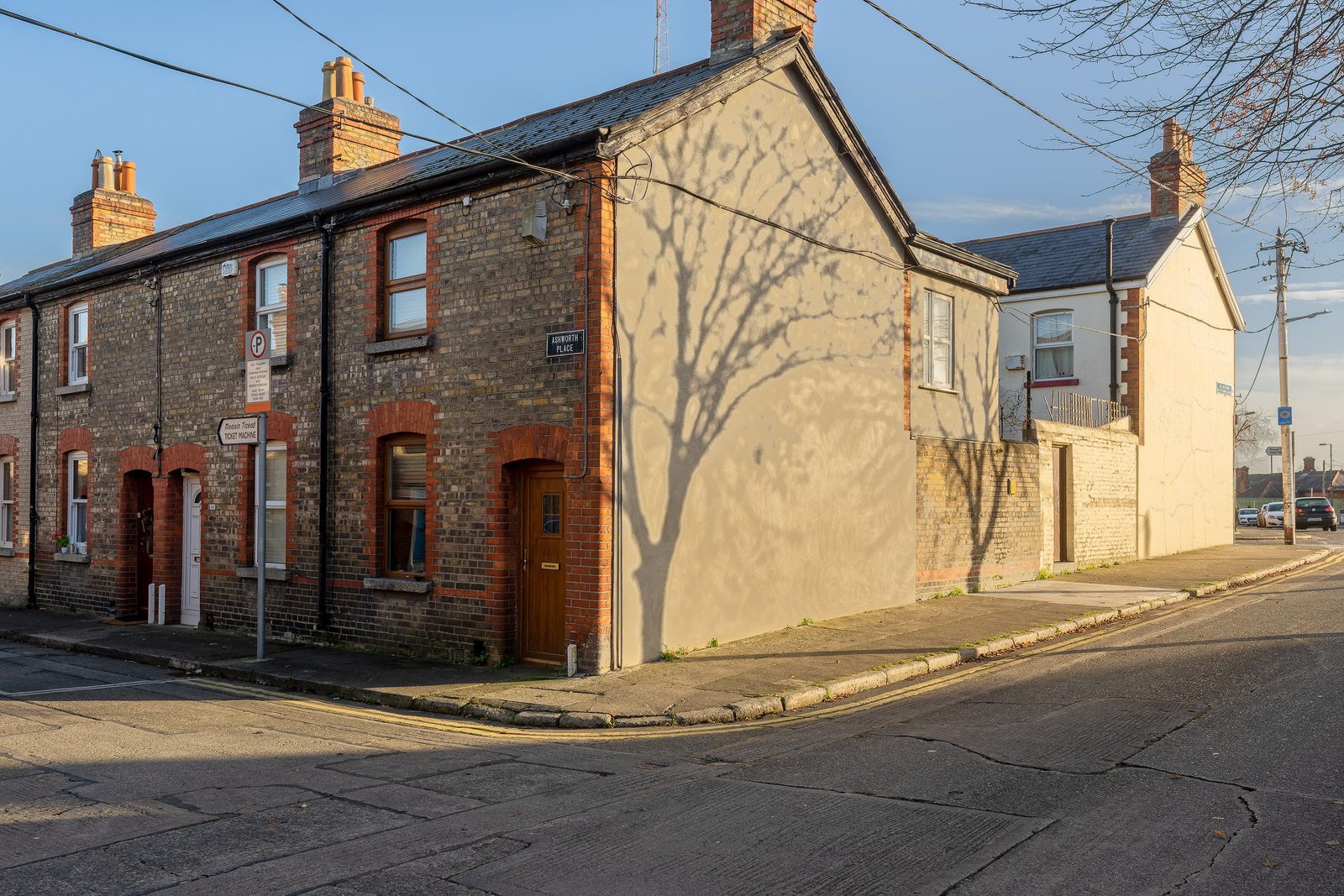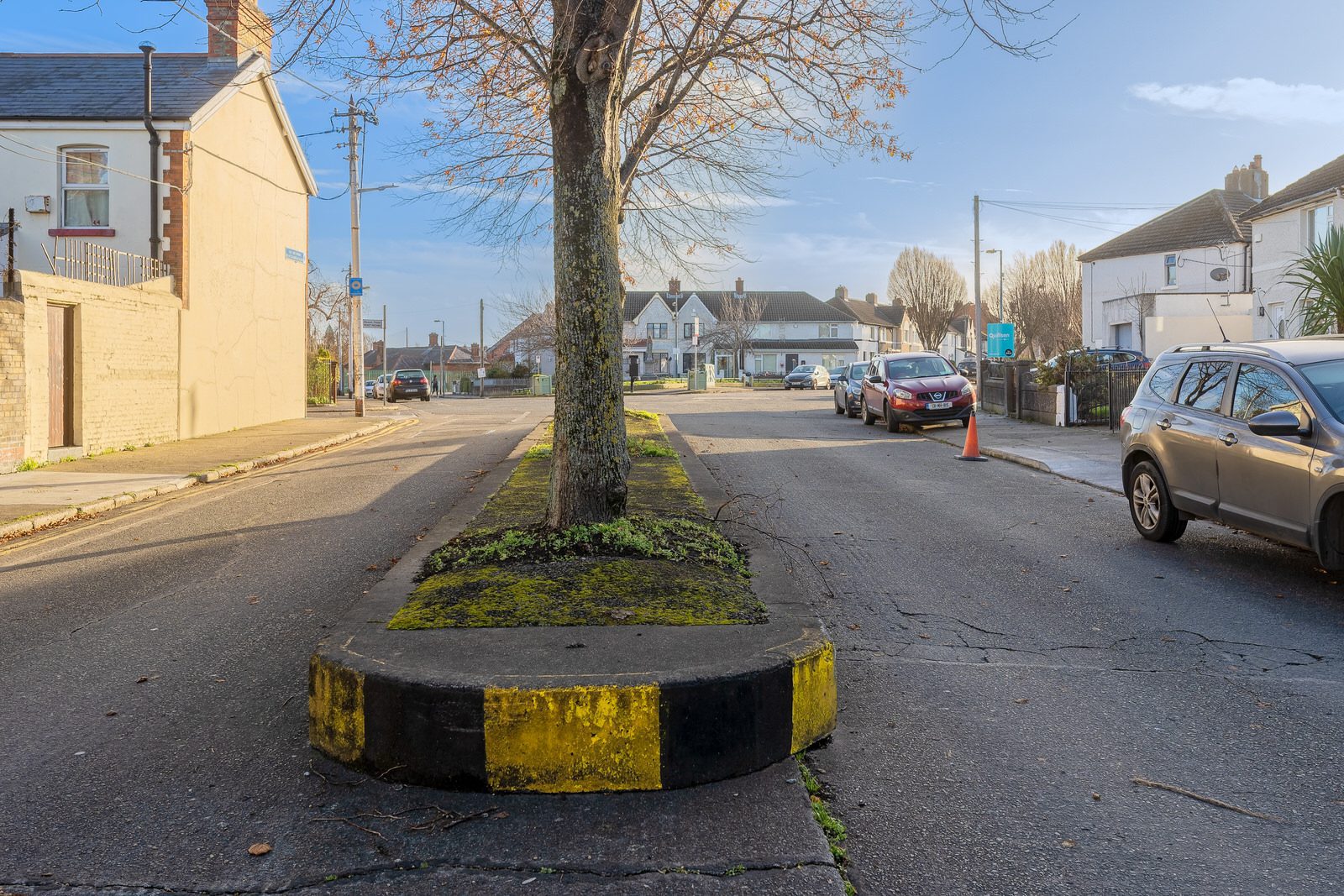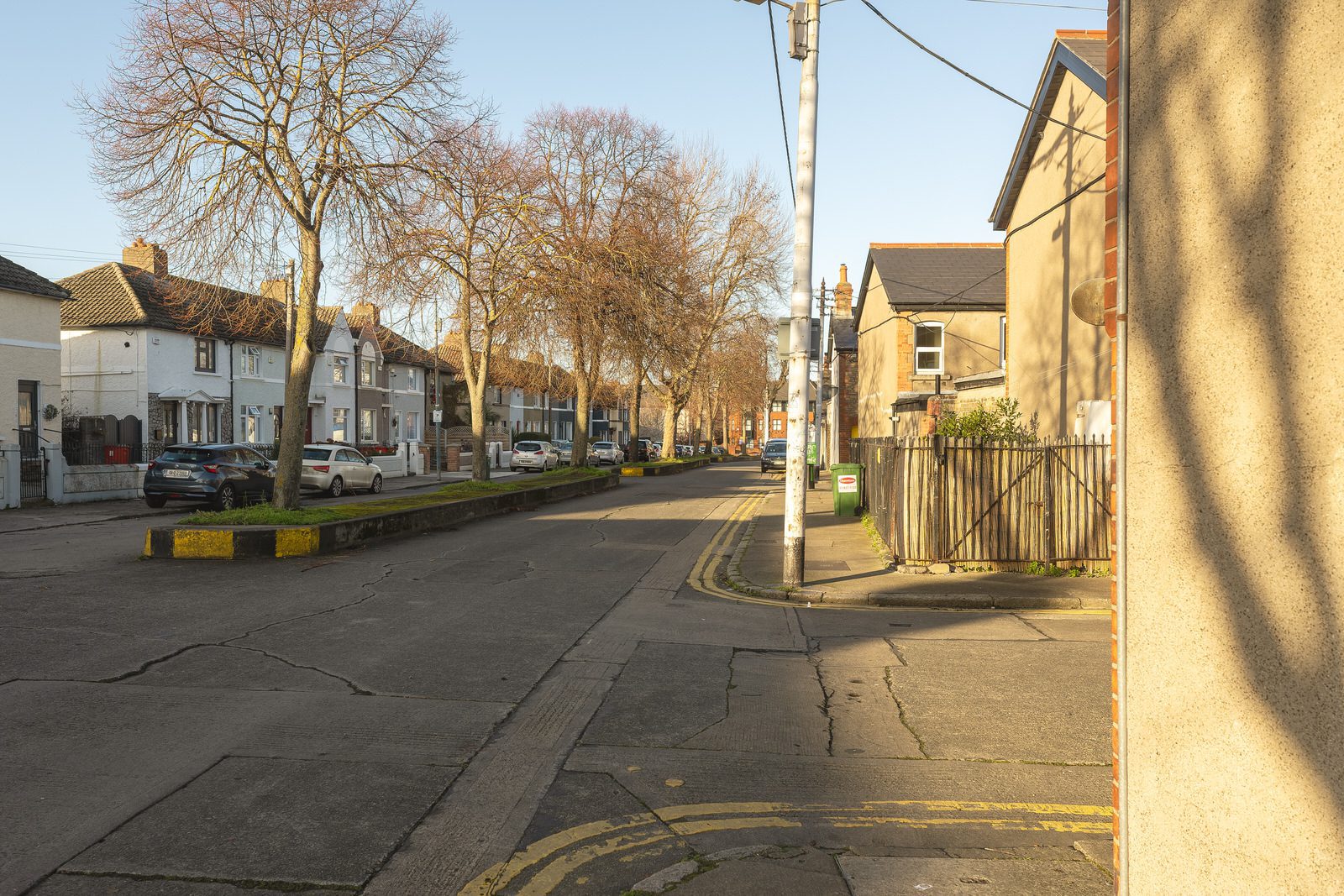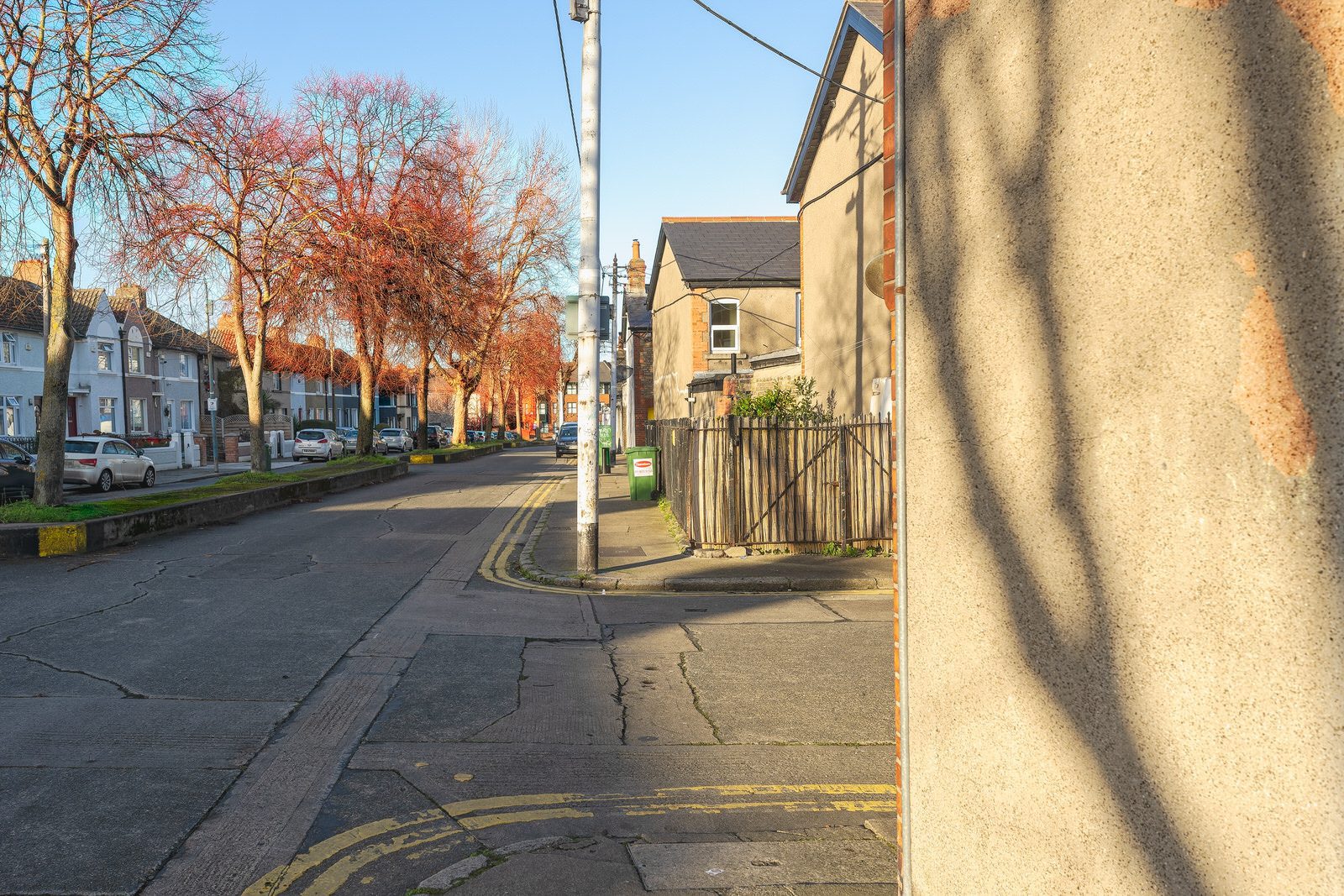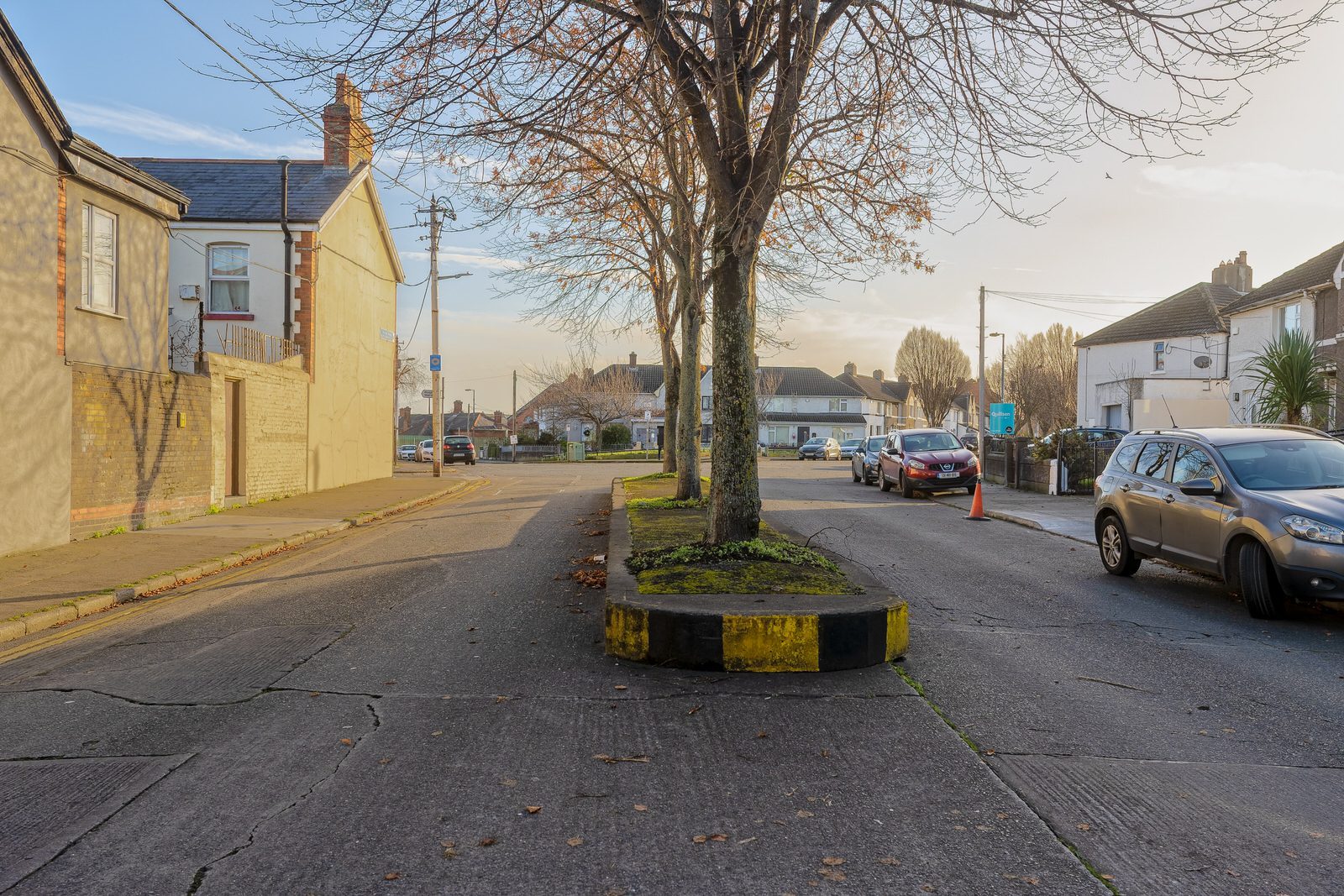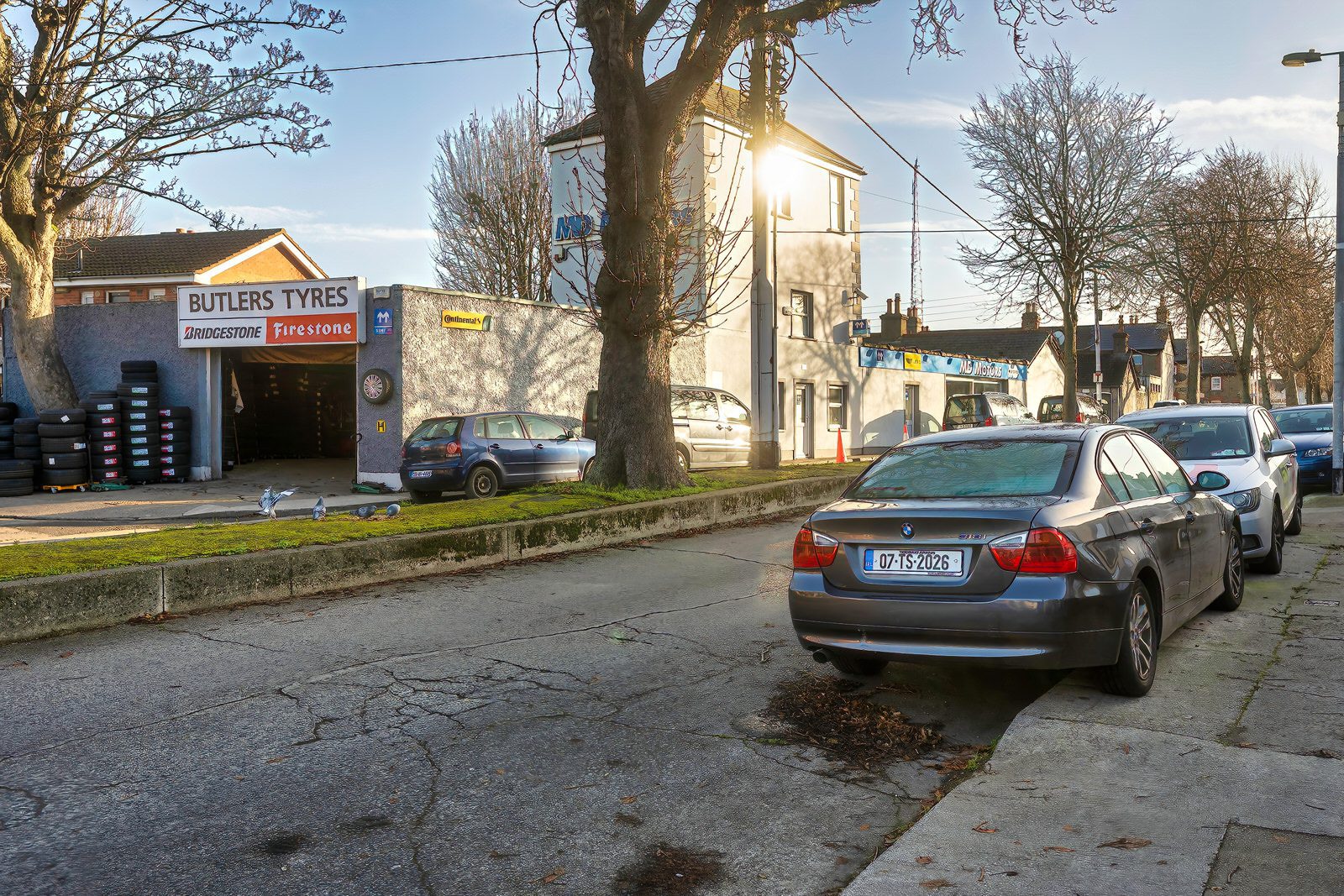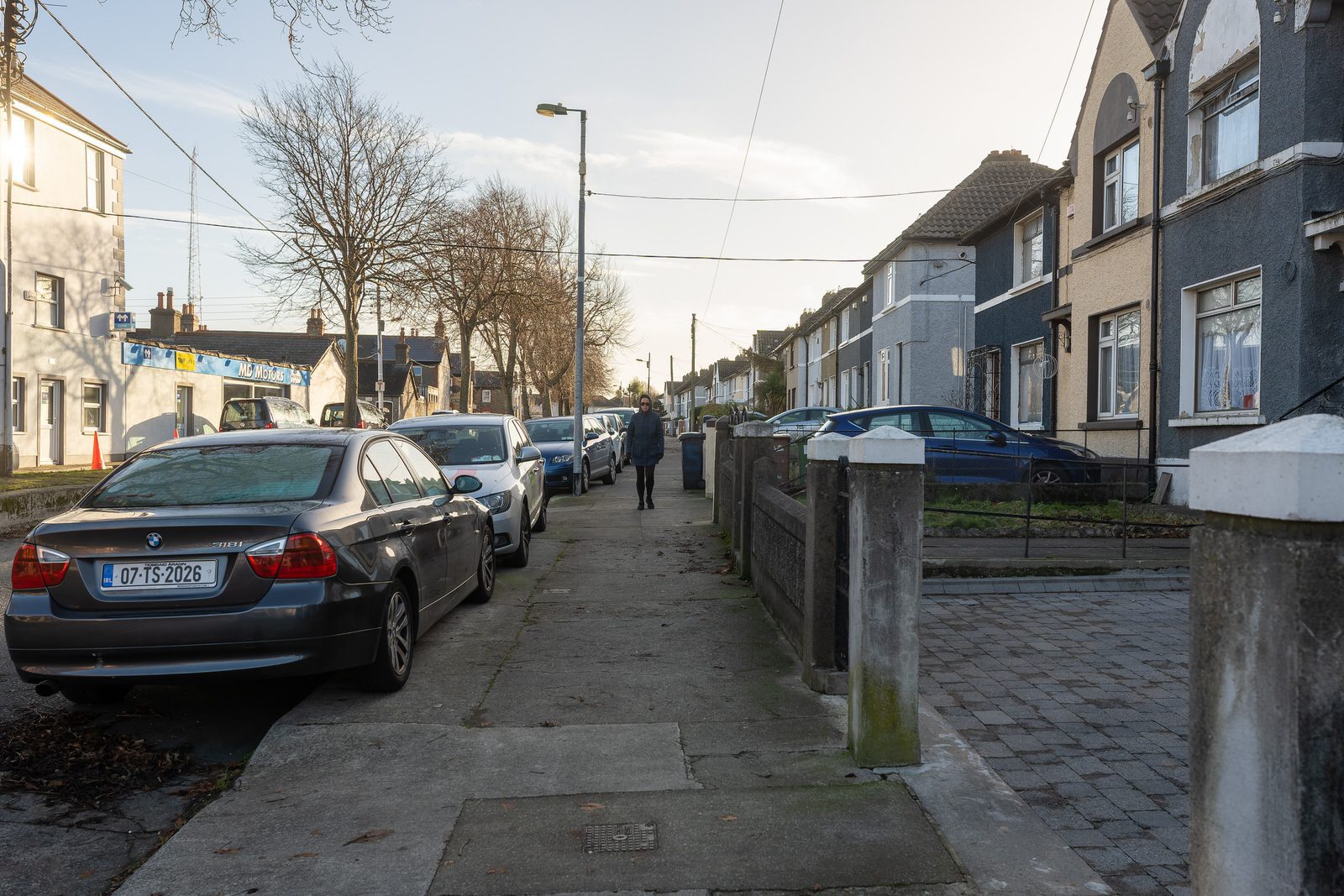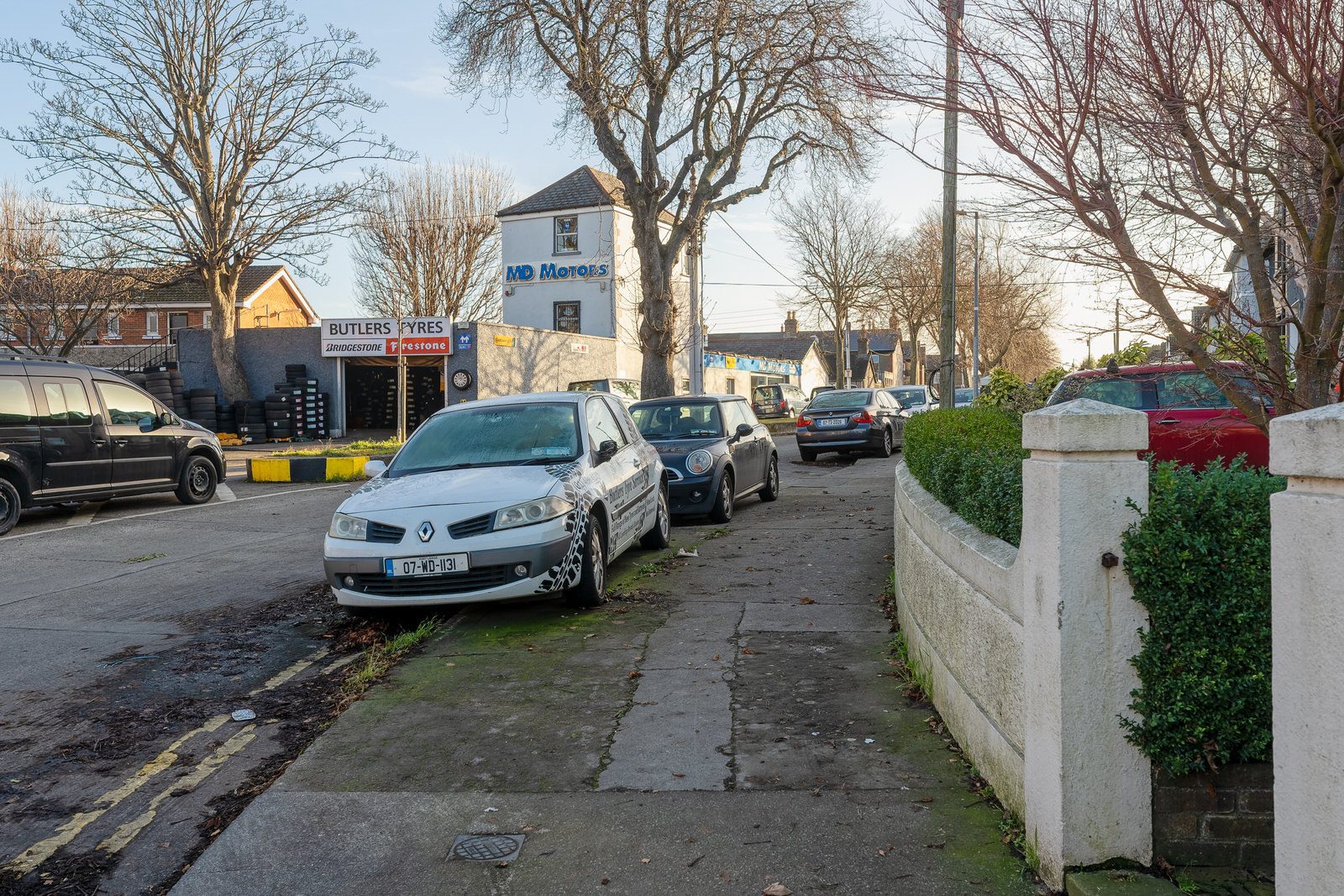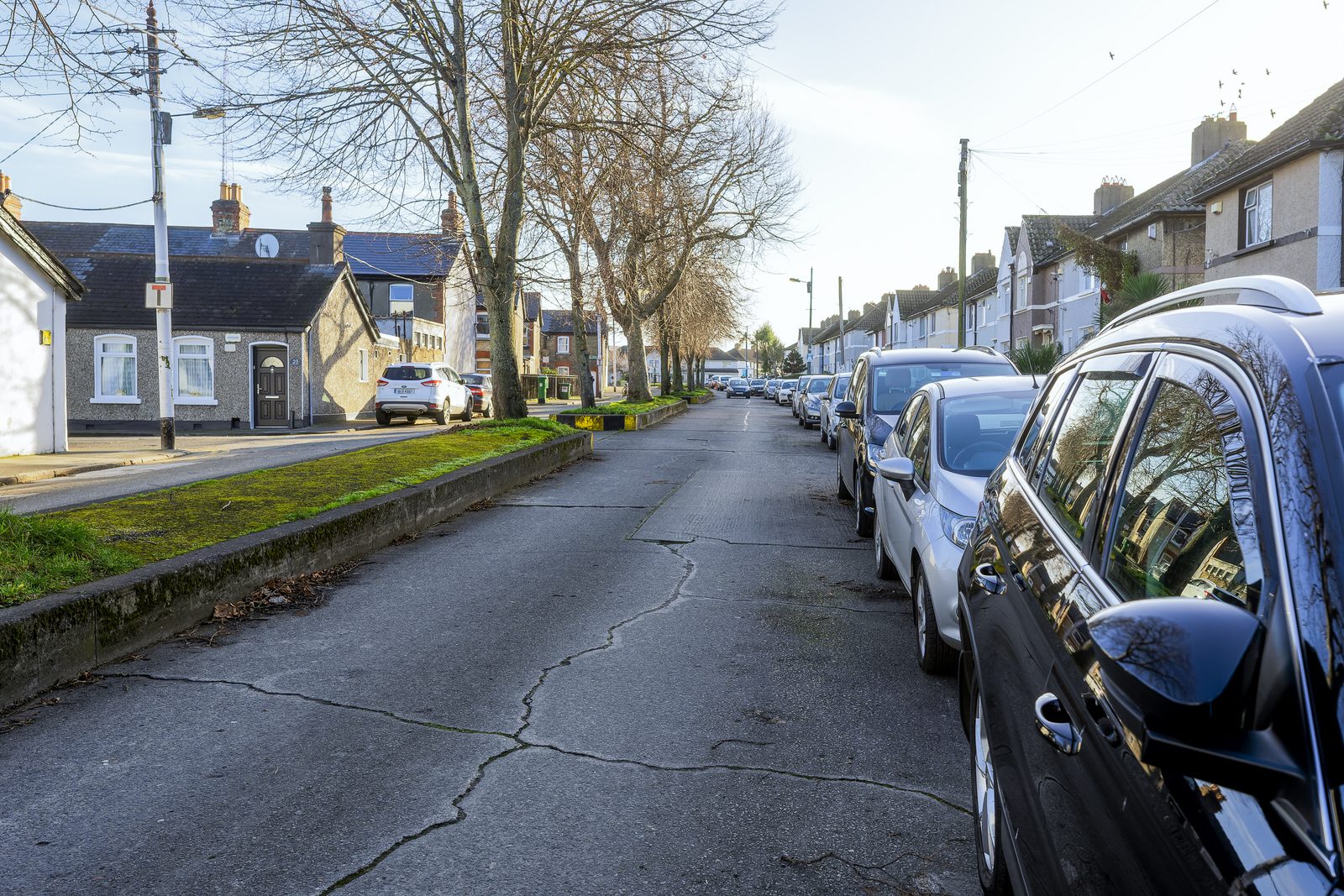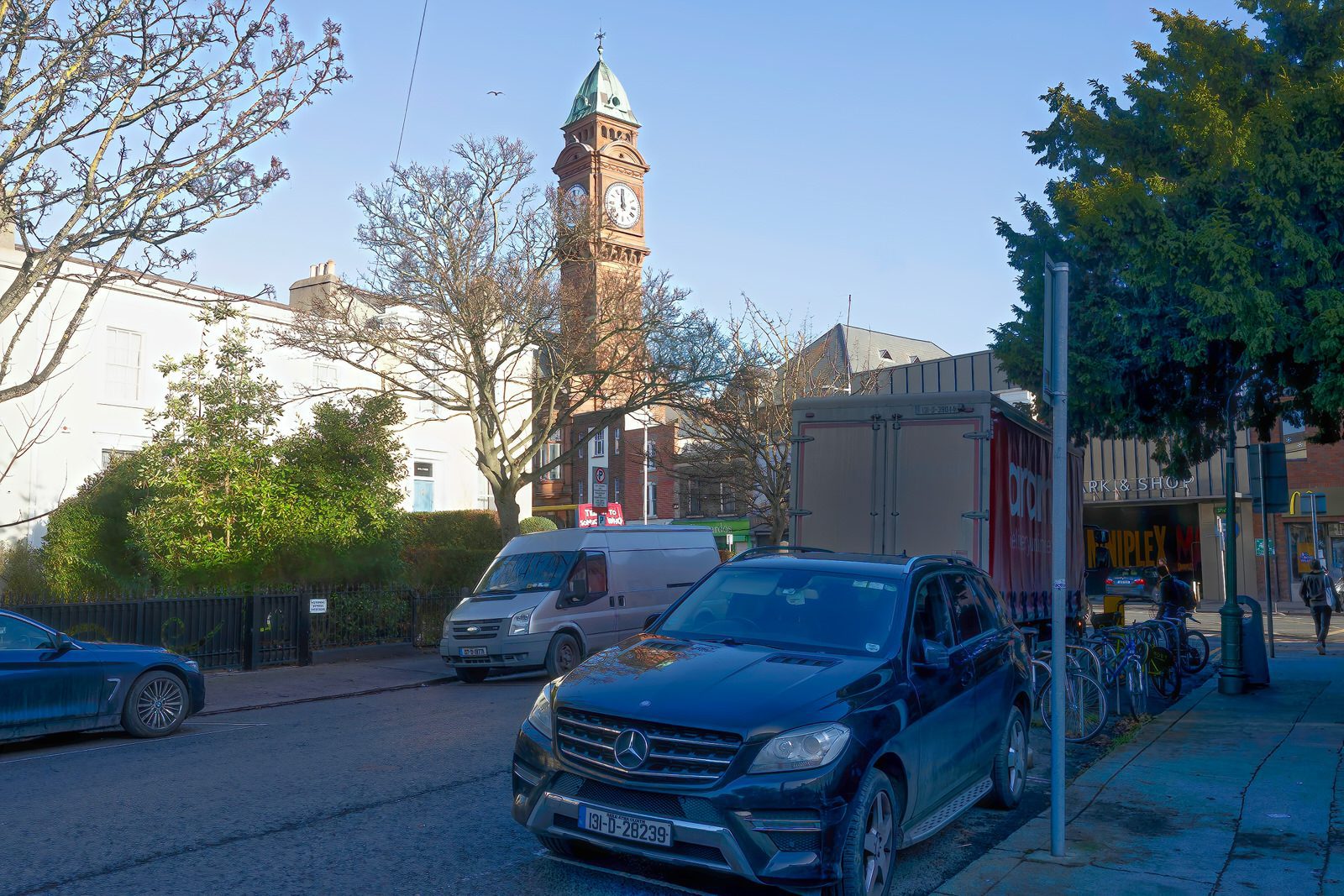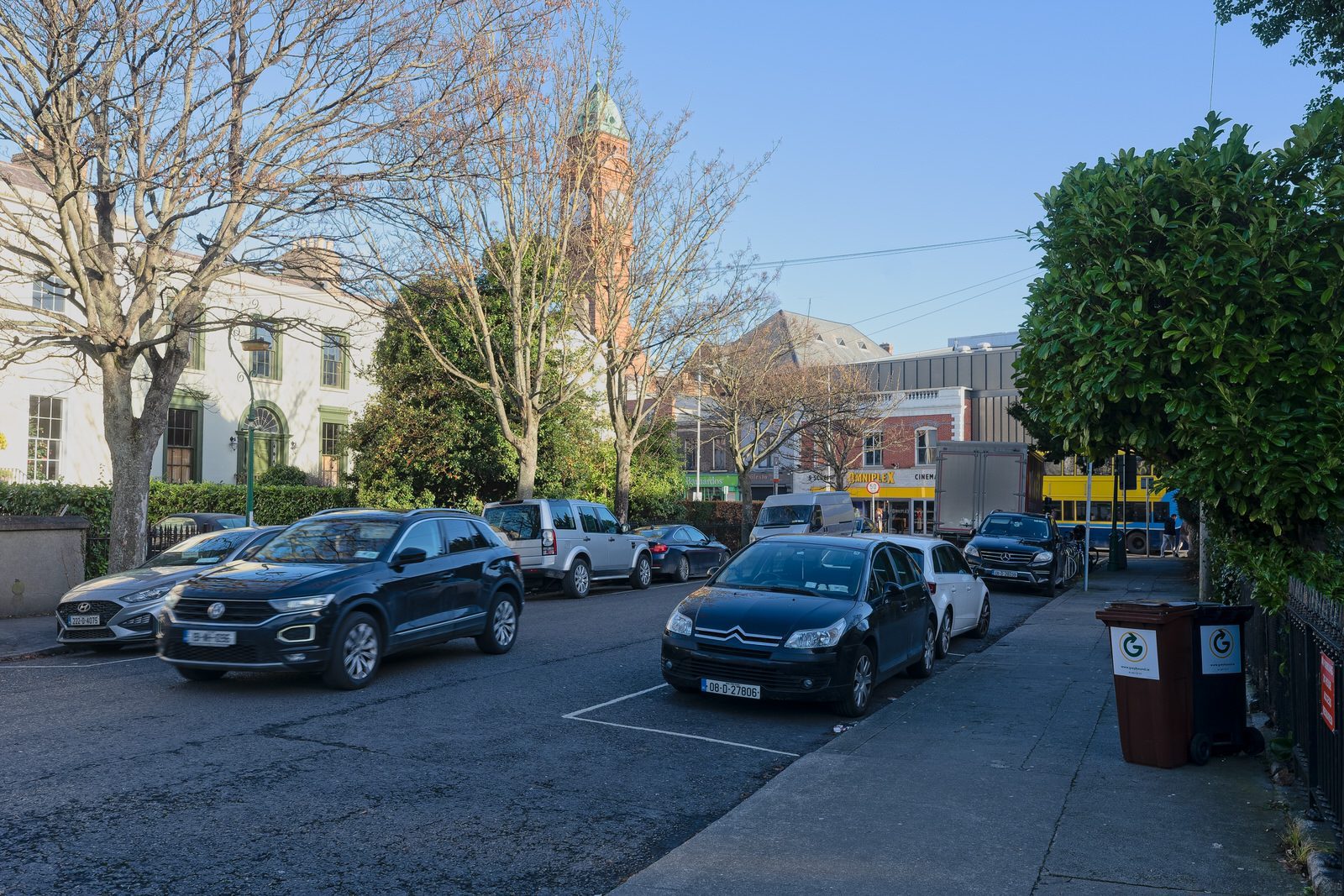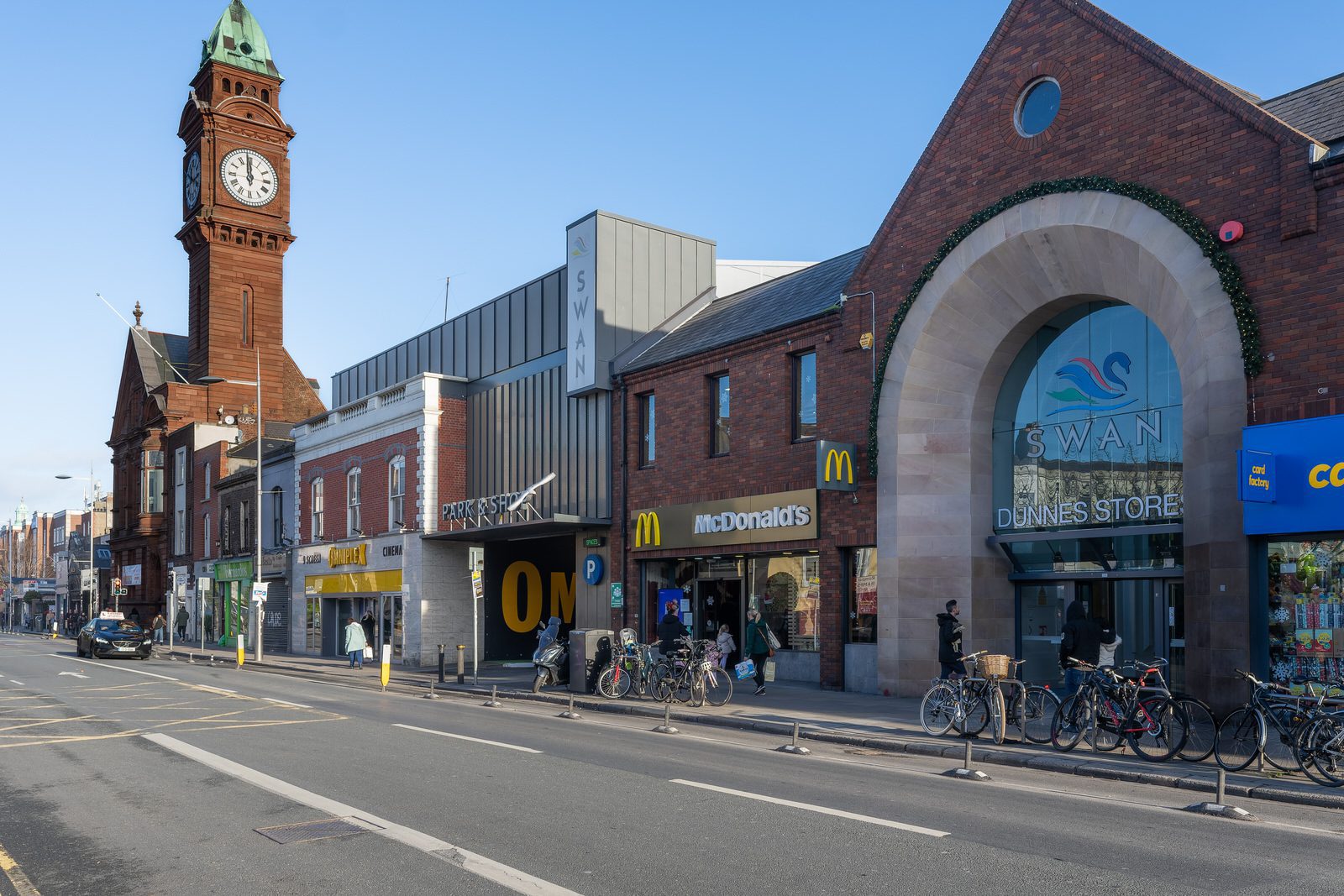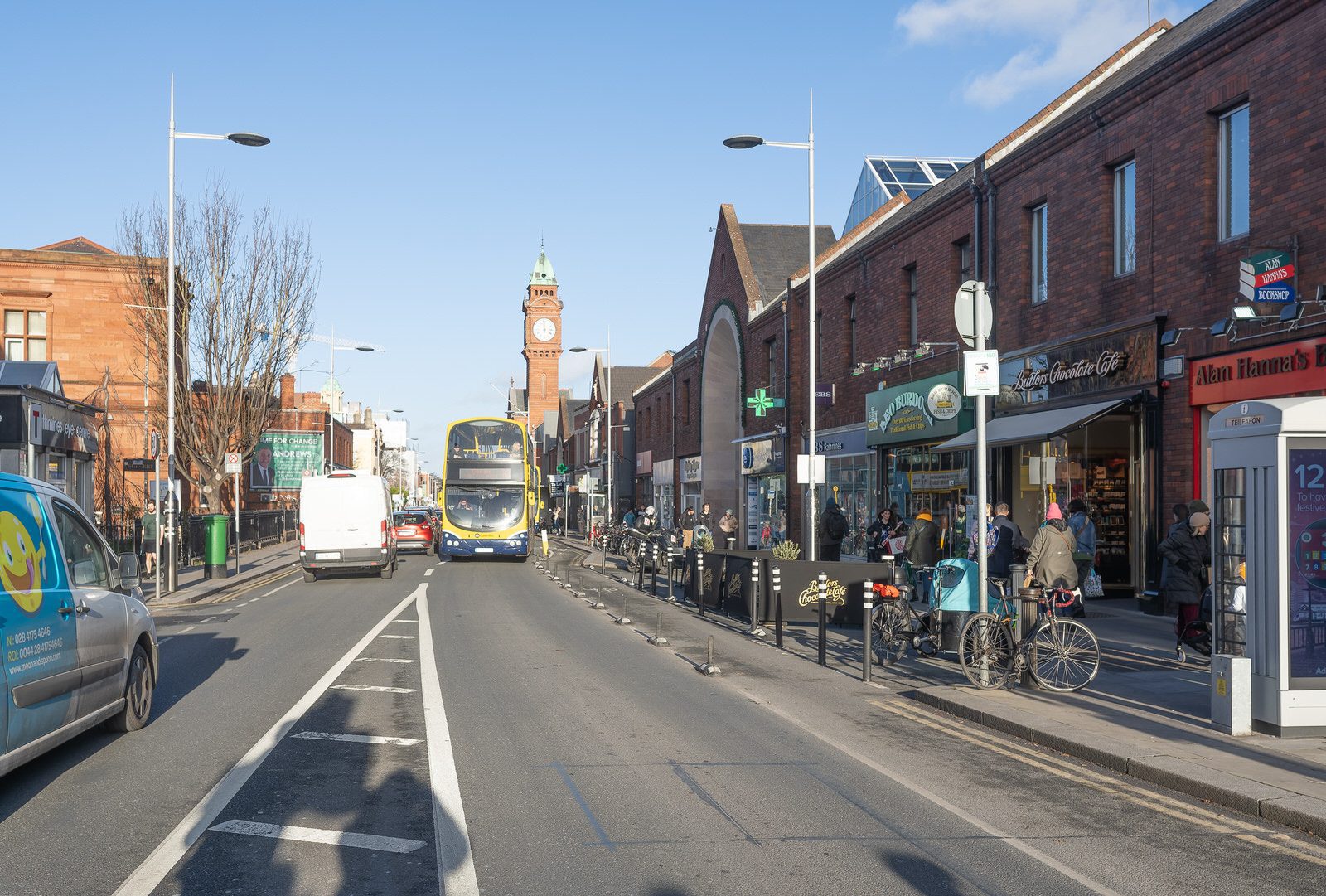ONCE KNOWN AS HEN AND CHICKEN LANE
I would describe the immediate area as a complex of streets and lanes near what was known as Portobello Barracks which is interesting as Mount Drummond Avenue was formerly known as Hen and Chicken Lane, indicating the rural nature of the area until the late nineteenth century.
I found the following description in an old document: Dublin. ‘Portobello Barracks. Sketch shewing the Ordnance Boundary and Hen & Chicken Lane’: plan. Scale: 4.5 inches to 4,000 feet. Compass indicator. Originally filed with papers of January 1850.
Cathal Brugha Barracks is an Irish Army barracks in Rathmines, Dublin. A key military base of the Irish Defence Forces, it is the headquarters of 2 Brigade, and houses the Military Archives of the Department of Defence.
The barracks was originally constructed between 1810 and 1815, and named Portobello Barracks for the area in which it was sited. (When Sir Francis Drake looted the city of Portobelo, Panama, died and was buried at sea in its harbour, many places in England and Ireland were commemoratively named Portobello – including part of Rathmines in 1696. The nearby canal bridge and the area became known as Portobello and thereafter, the barracks.)
In 1817 William Windham Saddler, son of balloonist James Saddler, set off in a hot-air balloon from the grounds of the barracks landing in Holyhead in North Wales.
Originally designed as a cavalry barracks, it saw some development along these lines, with additional land being purchased, and the addition of a church (1842) and canteen block (1868).
During the 1916 Easter Rising, and the Irish War of Independence, British troops from the barracks were involved in actions throughout Dublin. During this time, three journalists, including the pacifist Francis Sheehy-Skeffington, were murdered outside the barrack guardroom. The Royal Irish Rifles company commander Captain Bowen-Colthurst, who ordered the shootings, was controversially adjudged “insane” at the subsequent inquiry and court-martial.
On 17 May 1922 Irish troops took possession of the Barracks, and it became the National Army’s Headquarters under General Michael Collins.
In 1952 it was renamed for Cathal Brugha, who was a leader during the 1916 rising, Minister for Defence in the First Dáil, and who lived locally for a time. Cathal Brugha, a leader in the Anti-Treaty IRA, was shot by the National Army on O’Connell street during the Battle of Dublin.
